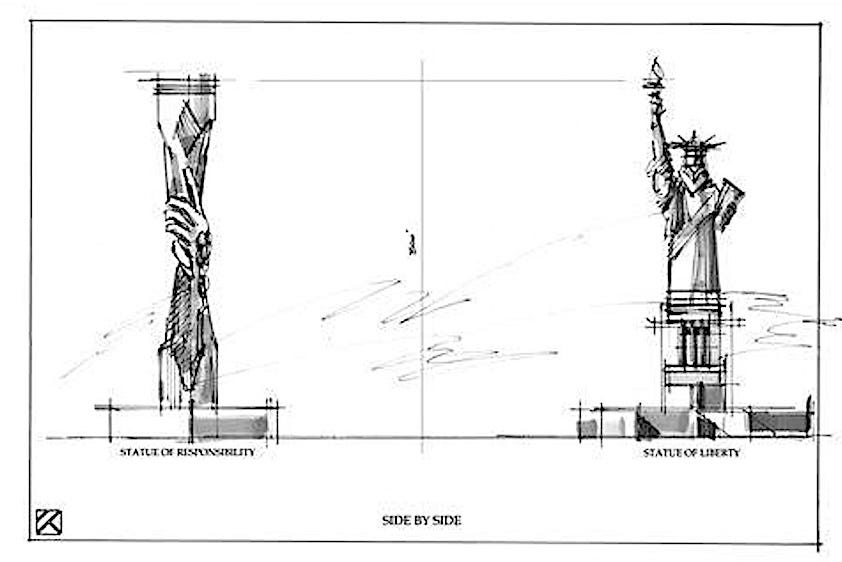The Ego is nothing other than the focus of conscious attention.
〰 Alan Watts 〰
The Adopted Ego
Ego by itself is an artificial and deceptive process.
〰 Henry Maudsley 〰
The introduction of the word ego in European philosophy is credited to the French philosopher René Descartes (1596-1650), who wrote in Latin. Descartes became most famous for his statement ‘cogito, ergo sum’ with its sloppy translation, ‘I think therefore I am,’ but let’s not get distracted by that here.
A lesser known, yet arguably more fundamental layer of Descartes’ work is his exploration of the ego. At some point in his philosophical contemplation, the father of Cartesian dualism began to doubt the existence of everything ~ e.g. the physical world, his own body ~ preempting the conclusions of Max Planck and Hans-Peter Dürr by about three hundred years.
Both renowned quantum physicists confirmed in the mid 20th century Descartes’ suspicion that matter in its essence is a far cry from what physics had assumed, making the unsettling announcement that “there is no matter as such.”
Descartes ~ spinning this thread of thought further ~ arrived at the realisation that the existence of his own thinking self was the only thing he could know for sure. In his Meditations on First Philosophy he wrote in the early 17th century: “Ego sum, ego existo.” (= I am, I exist).
The realisation ego sum (= I am) ~ a natural conclusion drawn from the act of doubting ~ became for Descartes the ‘bedrock of every individual’s existence’. In other words, the act of doubting one’s existence proves that there must be an ‘I’ to perform the act of doubting.
the act of doubting one’s existence proves that
there must be an ‘I’ to perform the act of doubting.
Please note that Descartes didn’t use the word ego in the sense it is used in English today, but in the Latin sense of the first person singular pronoun I, representing the self as the seat of human awareness.
By 1707, ego [from Latin ego = I], had been adopted in metaphysics in the sense of “the self; that which feels, acts, or thinks.”
Henry Maudsley M.D., in his book Body and Will (published 1884) uses ego and self interchangeably. He explains that ‘self and the world do not exist apart…’ and continues his argument, seamlessly replacing the word self with the word ego.
In the 1920s, Sigmund Freud (1856-1939) developed his concept of the ego, id and superego as part of his model of the human mind. Based on his work, Freud is credited with introducing the word ego in psychological terminology.
Through the work of Carl G. Jung (1875-1961) the word ego became synonymous with a number of key functions of human identity, personality, negotiating skills and awareness of our relationship between inner and outer worlds of subjective human experience.
According to Jung, the ego is “the centre of the field of consciousness which contains our conscious awareness of existing and a continuing sense of personal identity. It is the organiser of our thoughts and intuitions, feelings, and sensations, and has access to memories which are not repressed. The ego is the bearer of personality and stands at the junction between the inner and outer worlds.”
The trouble with attributing the word ego to either Sigmund Freud or Carl G. Jung is that neither of them used the word in their writings. Freud was Austrian, Jung was a Swiss native from the German speaking part of the Helvetic Republic. Both wrote in German, using the first person singular pronoun ich (= I), albeit in a capitalised format Ich, which in German spelling indicates the use of the pronoun as a noun.
Neither Freud nor Jung used the word ego in their writings.
The word ego snuck into Freud’s and Jung’s written work courtesy of their English translators, who decided to use the capitalised Latin pronoun Ego to represent the German Ich.
side note: In the French translation, the German ‘das Ich’ is translated as ‘le moi’ (= the me)
Unsettled Self & Ego in a Bewildering World
Isn't the origin of conflict ego?
If there is no ego there is no becoming.
〰 Jiddu Krishnamurti 〰
Jacob and Wilhelm Grimm ~ famous for their collection of fairy tales (first published 1812-1815) circulating through German speaking countrysides in oral tradition, inspiring Walt Disney over a century later, and continuing to enchant viewers and readers around the world ~ also had a day job.
The Grimm brothers were lexicographers. They initiated the first German etymological dictionary (Volume 1, A-Biermolke published in 1852 and the final Volume 33, Bibliography in 1960), a magnum opus filling 1.15 metres of shelf space in my library.
The entry for the word selbst (= self) reveals that the Grimm brothers found the word being used as an adjective with three forms › selb, selber, selbst (= self, selfer, selfest). These look like forms of regular comparative inflection of adjectives ~ structured along the lines of great, greater, greatest or small, smaller, smallest. That’s how the word self could be used in German, back in the early 19th century, apparently.
Self, selfer, selfest…
… who is the selfest one of all?
Based on this revelation, I like to think that the grammatical inflection of selb › selber › selbst | self › selfer › selfest may have inspired Freud’s theory of the ego › id › superego, which could’ve just as well become known as:: me › it › super-me.
The translation of Freud’s Ich certainly inspired generations of philosophers, psychologists and their readers to construct a habitat where the ego might feel at home.
Not surprisingly, each of the great minds embracing this ego | I, me ~ who is ultimately their own self ~ comes up with their personal interpretation of collective human self-perception. Countless philosophers and authors in the fields of psychology, spirituality and self-help/ personal development have added their glimpse of the ego to the mix. The spectrum of interpretations couldn’t be more colourful. Here are few of examples:::
Immanuel Kant (German philosopher, 1724-1804) introduced the transcendental Ego, as the self that is necessary to form a unified empirical self-consciousness (or transcendental self-consciousness). Kant described this transcendental Ego in his Critique of Judgment, as “the bare consciousness of existence” ~ which in my mind suggests a vital link between the sense of self and subjective experience.
From his interpretations, Kant draws the conclusion that “Nothing can be known of this self, because it is a condition, not an object, of knowledge.”
Kant’s ‘critical judgment’ flies in the face of the Socratic command of self-knowledge as a moral duty, but this is a wordcast, not a panel discussion of philosophical arguments.
Edmund Husserl (German philosopher, 1859-1938) developed an egological concept of consciousness. He writes about ‘pure ego’ which he identifies with Kant’s ‘transcendental ego’ while contrasting it to the ‘empirical ego’. In Husserl’s definition, this pure ego is (a) a non-material entity transcending space and time, (b) the “necessary centre of all relations” and “unmoving point of reference”, and (c) the foundation of all knowledge, “without the ego no knowledge can be had.”
Jean Paul Sartre (French philosopher, 1905-1980) in his first philosophical work, The Transcendence of the Ego, criticised Husserl’s egologigal concept. Sartre describes the ego as an object lying outside of consciousness. He argues that the ego, rather than belonging to the substance of consciousness, is an intentional act of it.
Carl G. Jung (Swiss psychiatrist, psychologist and psychotherapist, 1875-1961) regards the ego as a central constituent of the psyche. He defines ego as (a) the conscious part of the personality, (b) it represents the image we have of ourselves, and (c) it is an important mediator between the conscious and the unconscious.
Erik Homburger Erikson (German-American child psychoanalyst, 1902-1994) presented an entirely new Ego, gleaned from his work with autistic children.
“No one who has worked with autistic children will ever forget the horror of observing how desperately they struggle to grasp the meaning of saying ‘I’ and ‘You’ and how impossible it is for them, for language presupposes the experience of a coherent ‘I’.” Erikson writes from the perspective of working with children and young people who struggle with the concepts of I, Myself, and My Ego.
In the same chapter of his book Identity, Youth, and Crisis, Erikson explains his interpretation with a shocking revelation. “By the same token, work with deeply disturbed young people confronts the worker with the awful awareness of the patients' incapacity to feel the ‘I’ and the ‘You’ which are cognitively present and of the fear that life may run out before such feeling has been experienced-in love. No other affliction makes it equally clear that ego psychology alone cannot encompass certain central human problems which so far have been left to poetry or metaphysics.”
Con-Coction in the Cauldron of Ego Tinctures
The problem is that ego can convert anything
to its own use, even spirituality.
〰 Chogyam Trungpa 〰
Buddhist teachings ~ in so far as they have been spread and interpreted in Western culture ~ blend the concept of ego with (a) self-grasping and (b) self-centredness.
Ego is regarded as an illusory construct born of a false sense of separation of the individual from the wholeness, leading to greed, hatred, and delusion. The false sense of ‘I’ produces self-grasping and self-centredness as a survival strategy, exacerbating the trouble::
(a) Self-grasping is seen as the root cause of human suffering and samsara ~ the cycle of birth, death, and rebirth.
(b) Self-centeredness is understood as the individual prioritising their own happiness and success over the wellbeing of others.
As a counterpart to a false or inflated sense of self, Buddhist teachings also acknowledge a ‘healthy ego’, which guides humans to take responsibility for their actions. An effective Dharma practice encourages the healing of an either inflated or deflated ego/ sense of self.
The aim in Buddhism is not to ‘get rid of the ego’ ~ a misunderstanding in the light that the ‘ego doesn’t exist in the first place’ ~ but transcendence of the concept of one’s own ego. The teachings revolve around recognising and disentangling oneself from one’s own entanglement with ‘self-grasping’ and ‘self-centredness’ while cultivating wisdom and compassion.
Eckhart Tolle (German author of two best selling books and spiritual influencer, *1948) defines the ego as the part of the human mind that comments, doubts, and speculates on everything. According to Tolle, the ‘egoic mind’ (a) seeks to gain superiority, (b) is associated with negativity, and (c) produces an incessant stream of involuntary and compulsive thinking centred around the ‘I’.
Tolle’s interpretations are influenced by Buddhist theories, with a focus on ‘living in the present moment’ and ‘overcoming the ego.’
Buddhist teachings and Sartre’s philosophical work both focus on transcendence of the ego.
The question is, what do they mean? Are they talking about the same thing? Both theories reject the existence of a fixed self and say it’s all made up by the human mind.
However, while Buddhism focuses on compassion and ethical conduct as a means to overcome ego-attachment and achieve enlightenment, Sartre’s intention is to realise human freedom and responsibility.
For Sartre, the ego is a false representation of the world. It is a form of self-deception, which denies humans their freedom. The freedom he talks about is not just a matter of having choices or exercising free will. This ego also lures humans into the false assumption of being able to avoid their responsibility.
According to Sartre, freedom comes with a heavy burden of responsibility. This belief is shared by Viktor Frankl who wrote in his book Man’s Search for Meaning:
“Freedom is only part of the story and half of the truth. Freedom is but the negative aspect of the whole phenomenon whose positive aspect is responsibleness. In fact, freedom is in danger of degenerating into mere arbitrariness unless it is lived in terms of responsibleness. That is why I recommend that the Statue of Liberty on the East Coast be supplemented by a Statue of Responsibility on the West Coast.”
The Statue of Responsibility has been endorsed by the governor of Utah in 2023 and is planned to be built on the site of a former prison.
to be continued…








Thanks so much for this series Veronika!
So much gets lost in translation into English. Thank you for being an archeologist of words and a miner of meaning. Doesn’t sound like there’s a consensus on ego let alone consciousness. Jung’s definitions, are the ones most closely recognized as familiar by my egoic conditioning and upbringing. The Buddhist resonates most. Enough of the angry old men lol- what did the wise women say? I’m more inclined to believe in something born from that cloak of meaning. Looking forward to part three. 🙏❤️
Self, ego’s echo?
I’s illusion? Me’s mirage?
Mine, Matter mess most.
...
We’s woke whole wisdom?
Symbiocene may suggest
all are one is all.